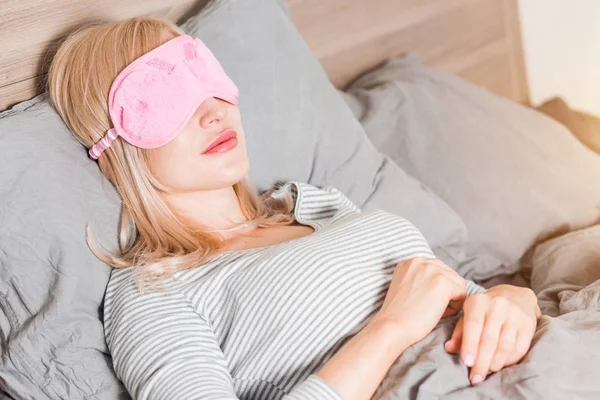A study warns “A Common Bedtime Habit Could Raise Your Risk of Deadly Disease” Have you ever drifted off to sleep with the soft glow of the television flickering in the background? While it might seem harmless, a recent study published in The Proceedings of the National Academy of Sciences (PNAS) paints a surprising picture: this seemingly innocuous bedtime habit could be silently increasing your risk of developing serious health conditions like heart disease, diabetes, and metabolic syndrome.
Conducted by researchers at Northwestern University in Chicago, the study reveals a concerning link between sleeping with the television on and a higher prevalence of these chronic diseases. While the flickering light and distracting sounds were suspected culprits, the study delves deeper, uncovering intricate biological mechanisms at play. Let’s explore the findings and understand how this common bedtime habit might be impacting your health.

The Culprit: Sleepless Nights and Disrupted Rhythms
Imagine your body as a finely tuned orchestra, where every instrument plays its part in harmony. Sleep is the conductor, ensuring each system functions optimally. But, just like a discordant orchestra, sleep disturbances can throw your body’s rhythms into disarray.
The study, led by Phyllis Zee, Chief of Sleep Medicine at Northwestern University, and Daniela Grimaldi, co-first author, investigated the effects of television viewing during sleep on over 4,300 adults. Their findings confirmed the detrimental impact of this seemingly minor habit. Compared to participants who slept in complete darkness, those who slept with the television on:
- Had a 56% higher risk of developing type 2 diabetes
- Were 58% more likely to have metabolic syndrome, a cluster of risk factors for cardiovascular disease
- Exhibited increased insulin resistance, a hallmark of both diabetes and metabolic syndrome
Previous scientific research has found similar results. One study from 2019 of more than 40,000 women found that falling asleep with the television on increased the risk of weight gain and obesity, which are linked to heart disease and diabetes.
But why does simply having the television on during sleep pose such a significant threat? The answer lies in the intricate dance of hormones and light sensitivity within our bodies.
Read Also | Tinned Fruit to Lower Heart Disease Risk: Can Canned be Better Than Fresh? Myths and Exploring the Science
The Science Behind the Link: Melatonin Mayhem and Beyond
Our internal clock, known as the circadian rhythm, governs various biological processes, including sleep-wake cycles, hormone production, and metabolism. Light plays a crucial role in regulating this rhythm, with darkness triggering the release of the sleep hormone melatonin.
Melatonin not only promotes sleep but also boasts numerous health benefits, including regulating blood sugar levels, reducing inflammation, and protecting against cell damage. However, exposure to artificial light at night, such as from televisions, disrupts melatonin production.
The PNAS study highlights this disruption, revealing lower melatonin levels in participants who slept with the television on. This, in turn, leads to a cascade of negative effects:
- Insulin resistance: Reduced melatonin disrupts the body’s ability to use insulin effectively, leading to higher blood sugar levels and an increased risk of diabetes.
- Inflammation: Melatonin’s anti-inflammatory properties are diminished, potentially contributing to the development of chronic diseases like heart disease.
- Cellular damage: Melatonin’s protective effects against free radicals are lessened, increasing the risk of cell damage and disease development.
The study adds to a growing body of evidence linking disrupted sleep to various health problems. It builds upon a previous 2019 study from the same research group, which found that falling asleep with the television on increased the risk of weight gain and obesity in women.
Beyond the Television: Optimizing Your Sleep Sanctuary
While the study focused on television viewing, it’s important to remember that other sources of artificial light at night can have similar detrimental effects. Smartphones, tablets, and even bright bedroom lights can disrupt your sleep-wake cycle and melatonin production.
Creating a healthy sleep environment is crucial for optimizing your health. Here are some helpful tips:
- Establish a regular sleep schedule: Go to bed and wake up at the same time each day, even on weekends, to regulate your circadian rhythm.
- Create a relaxing bedtime routine: Wind down for 30-60 minutes before sleep with calming activities like reading or taking a warm bath.
- Make your bedroom sleep-conducive: Keep it dark, quiet, cool, and clutter-free. Invest in blackout curtains, earplugs, and a comfortable mattress.
- Limit screen time before bed: Avoid using electronic devices for at least an hour before sleep, as the blue light emitted can suppress melatonin production.
- Seek professional help if needed: If you experience chronic sleep problems, consult a healthcare professional for personalized advice and treatment options.
Remember, sleep is not a luxury but a necessity. Prioritizing healthy sleep habits is an investment in your overall well-being. By making small changes to your bedtime routine and creating a sleep-friendly environment, you can reduce your risk of chronic diseases and wake up feeling refreshed and energized.
Beyond the Study: Future Directions and Individualized Approaches

While the PNAS study sheds light on the potential dangers of sleeping with the television on, it also opens doors for further research and individualized approaches to sleep health. Here are some key areas of exploration:
Deeper Dive into Mechanisms:
- Understanding individual variations: The study highlights a population-level association, but individual responses might differ based on factors like genetics, age, and overall health status. Future research could explore these variations to personalize risk assessment and interventions.
- Investigating specific light wavelengths: Not all artificial light is created equal. Delving deeper into the specific wavelengths emitted by different devices and their impact on melatonin production could inform targeted recommendations for minimizing light exposure at night.
- Exploring combined effects: The study focused on television viewing, but sleep disturbances often have multiple contributing factors. Examining the cumulative impact of various electronic devices, noisy environments, and stress on sleep health will provide a more holistic understanding.
Tailored Solutions for Diverse Populations:
- Addressing socioeconomic disparities: Access to healthy sleep environments and resources varies significantly across socioeconomic groups. Developing affordable and accessible interventions is crucial to address these disparities and promote sleep equity.
- Cultural considerations: Sleep practices and perceptions vary across cultures. Culturally sensitive approaches are essential to ensure interventions resonate and are adopted by diverse populations.
- Personalized sleep hygiene: One-size-fits-all sleep advice often falls short. Utilizing technology and individual health data could pave the way for personalized sleep hygiene plans that cater to specific needs and preferences.
Technology: Friend or Foe?
- Developing sleep-promoting technologies: Can technology be harnessed to promote healthy sleep? Exploring apps that adjust lighting, emit calming sounds, or track sleep patterns could offer personalized support.
- Mitigating blue light emissions: Collaborating with device manufacturers to develop features that reduce blue light emission or automatically adjust screen brightness based on time of day could minimize the disruptive effects of electronic devices.
- Leveraging data for sleep health promotion: Utilizing anonymized sleep data from wearable devices and apps could identify trends and inform public health initiatives to promote better sleep across populations.
The Road Ahead: Prioritizing Sleep for a Healthier Future
The PNAS study highlights the critical role sleep plays in overall health and well-being. By delving deeper into the mechanisms at play, developing personalized approaches, and harnessing technology responsibly, we can create a future where everyone has access to the quality sleep they deserve. Remember, prioritizing sleep is not just about feeling well-rested; it’s an investment in a healthier, happier, and longer life.
Read Also | How Probiotics and Prebiotics in Fermented Foods Impact Mental Health
Note: This article is written based on scientific evidence found by the 247newsaroundtheworld.com team. Sources are duly referenced with keywords hyperlinked to source websites and are clickable for reference.






